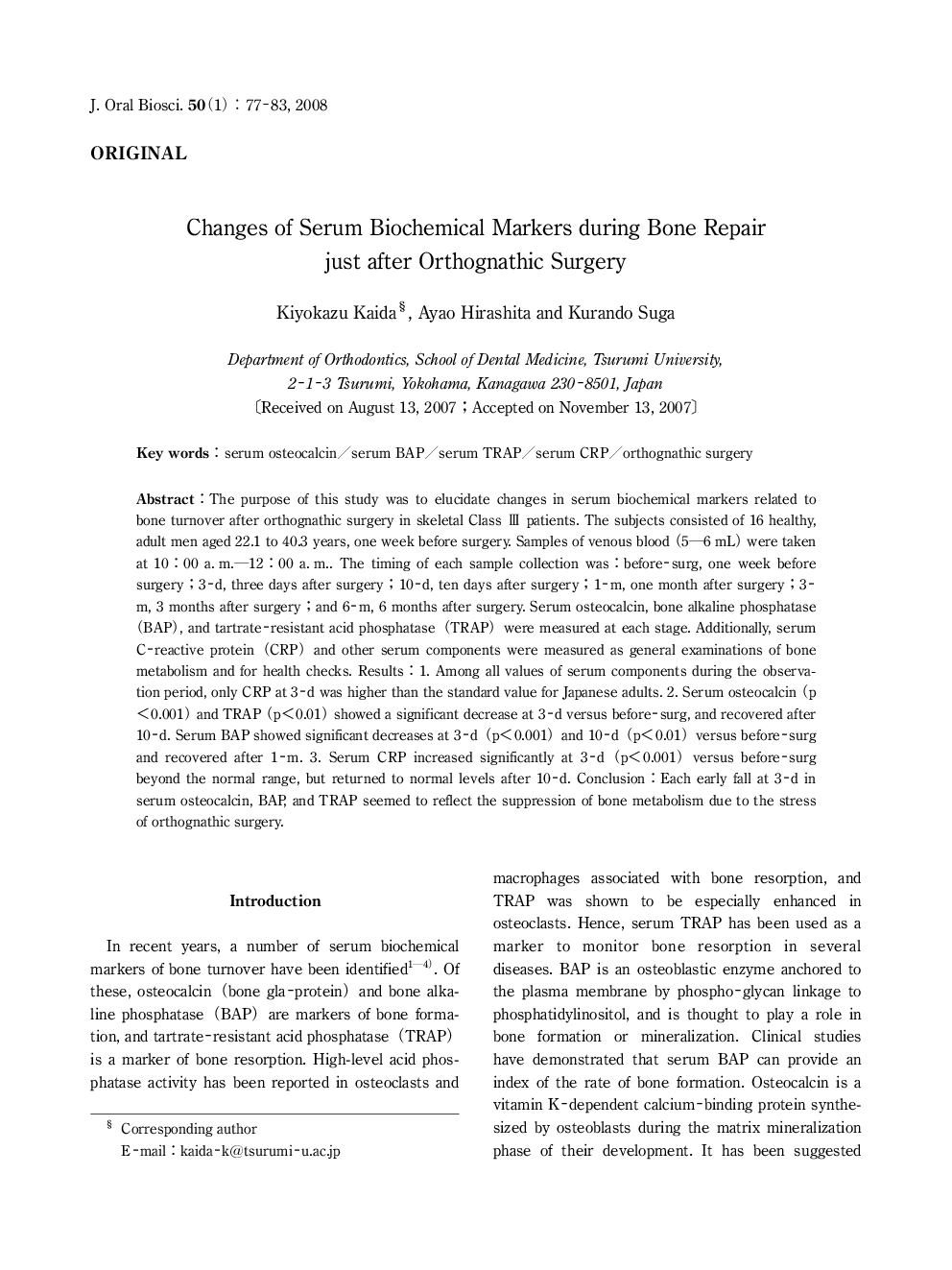| کد مقاله | کد نشریه | سال انتشار | مقاله انگلیسی | نسخه تمام متن |
|---|---|---|---|---|
| 2777072 | 1152666 | 2008 | 7 صفحه PDF | دانلود رایگان |

The purpose of this study was to elucidate changes in serum biochemical markers related to bone turnover after orthognathic surgery in skeletal Class III patients. The subjects consisted of 16 healthy, adult men aged 22.1 to 40.3 years, one week before surgery. Samples of venous blood (5–6 mL) were taken at 10 : 00 a. m.–12 : 00 a. m.. The timing of each sample collection was: before-surg, one week before surgery; 3-d, three days after surgery; 10-d, ten days after surgery; 1-m, one month after surgery; 3-m, 3 months after surgery; and 6-m, 6 months after surgery. Serum osteocalcin, bone alkaline phosphatase (BAP), and tartrate-resistant acid phosphatase (TRAP) were measured at each stage. Additionally, serum C-reactive protein (CRP) and other serum components were measured as general examinations of bone metabolism and for health checks. Results: 1. Among all values of serum components during the observation period, only CRP at 3-d was higher than the standard value for Japanese adults. 2. Serum osteocalcin (p<0.001 and TRAP (p<0.01 showed a significant decrease at 3-d versus before-surg, and recovered after 10-d. Serum BAP showed significant decreases at 3-d (p<0.001 and 10-d (p<0.01 versus before-surg and recovered after 1-m. 3. Serum CRP increased significantly at 3-d (p<0.001 versus before-surg beyond the normal range, but returned to normal levels after 10-d. Conclusion: Each early fall at 3-d in serum osteocalcin, BAP, and TRAP seemed to reflect the suppression of bone metabolism due to the stress of orthognathic surgery.
Journal: Journal of Oral Biosciences - Volume 50, Issue 1, 2008, Pages 77-83